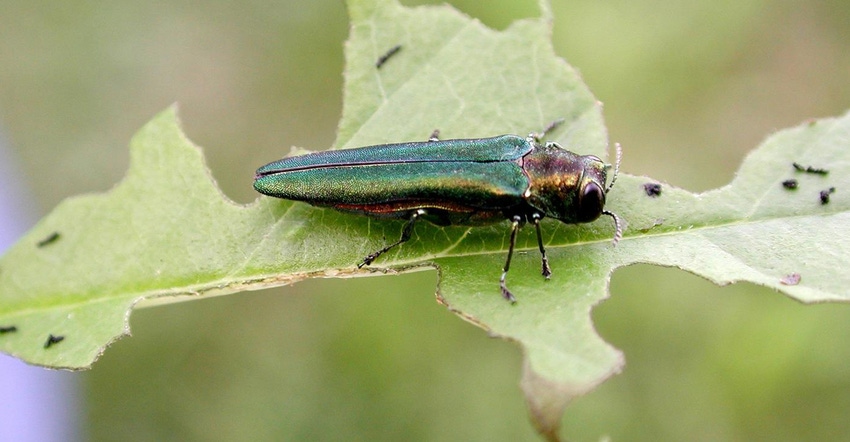
The North Dakota Department of Agriculture wants to protect the state’s ash trees from the emerald ash borer.
In December, the USDA Animal and Plant Health Inspection Service published in the Federal Register a final rule that removed the federal domestic EAB quarantine regulations, effective Jan. 14. However, North Dakota Ag Commissioner Doug Goehring says his department will enact its own regulations to prevent this invasive pest from getting into the state.
“North Dakota has 90 million ash trees; ash being the most common tree in naturally forested areas, cities and shelterbelts,” Goehring said in a news release. “While EAB has not been found in North Dakota to date, it has been found in Sauk Centre, Minn.; Winnipeg, Manitoba; and Sioux Falls, S.D.”
Identifying culprit
Dubbed the “green menace,” the emerald ash borer is native to Asia. It was first found in southeast Michigan in 2002.
The adult is a small, metallic-green beetle that only attacks ash trees. It is just 10 to 15 mm long and 3 mm wide. Adult beetles typically emerge in early summer, leaving exit holes in the bark. They briefly feed on the canopy and cause very little damage to the tree itself. The problems begin when they start reproducing and laying eggs in the branches and trunk.
The larval stage is what actually causes tree death. The larvae live under the bark of the tree and feed on the tree's vascular system, cutting off nutrient and water uptake. Unfortunately, emerald ash borers kill over 99% of the ash trees it attacks within four years of infestation.
Transporting pest
The emerald ash borer is in 35 states. The biggest danger of it reaching states like North Dakota is when the beetle hitches a ride on firewood and ash nursery stock.
The North Dakota regulations will prevent the movement of ash products such as raw logs, firewood, nursery stock and the insect itself into North Dakota from areas of the country known to be infested. All hardwood firewood, a major pest pathway, will be a regulated article that cannot be transported into North Dakota without having been treated or inspected by officials of that state. The rule also requires firewood to be labeled by county of origin if from partially infested states.
How can residents help? The state agriculture department is encouraging buying local this winter. The NDDA will be launching a local firewood finder to help North Dakotans and visitors easily find firewood. The platform will be free for users to post firewood for sale. Firewood sellers should fill out the form at Firewood Finder to submit their information.
Potential control measure
One company is working to treat trees infected with emerald ash borer. Arborjet completed projects in Missouri to save the ash trees. You can click through photos and see how the company gives a tree an IV.
About the Author(s)
You May Also Like






